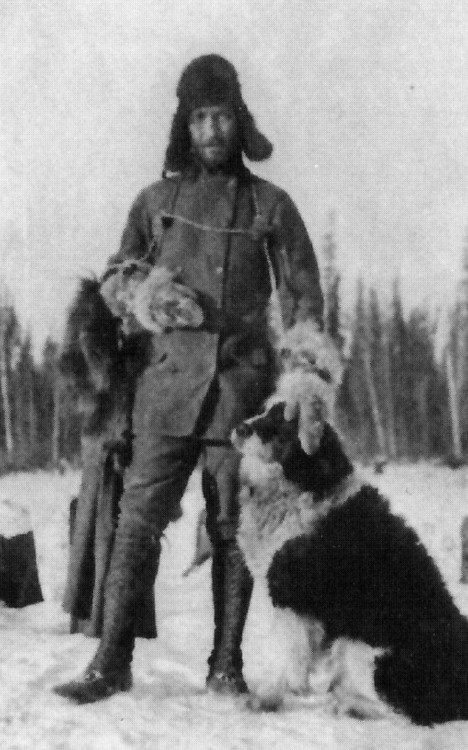Hudson Stuck and the first ascent of denali

(Originally published in the Sewanee Mountain Messenger. Republished by permission.)
One hundred years ago last Sunday, on March 17th, 1913, a group of men and boys left Fairbanks, Alaska, to climb the highest mountain in North America – Denali, also known as Mt. McKinley. That expedition is noteworthy for two reasons: first, because it succeeded and claimed the first ascent of Denali; second, because the expedition was organized and led by a Sewanee alumnus, the Rev. Hudson Stuck, Archdeacon of Alaska and the Yukon.
Stuck attended Sewanee from 1889-1892, studying theology (there was neither a separate school nor a theology degree at that time). After serving as Dean of the Cathedral in Dallas, Stuck accepted the challenge of serving in the far North.
In the course of his time in Alaska, Stuck became famous for his exploits, and for his books about them. He covered his mission territory in the dead of winter in several different years, writing an account called Ten Thousand Miles With a Dog Sled. His Ascent of Denali, about the expedition of 1913, was also a best-seller. Sewanee historian Arthur Ben Chitty described Stuck as “an ice-encrusted Lawrence of Arabia, undergirded with the zeal of St. Paul.“
Stuck’s earlier exploits in the mountains had included trips to the Spanish Peaks of the Colorado Rockies and the Canadian Rockies; he had also explored "the cañon of the Yellowstone and the Grand Cañon of the Colorado,” and he had summited Mount Rainier in Washington. He made plain his desire to summit Denali: "I would far rather climb that mountain than own the richest gold-mine in Alaska.”
But Hudson Stuck was far more than an early-twentieth-century Edmund Hillary with a priest’s collar. One of his favorite statements was, “I am sorry for a life in which there is no usefulness to others." Again and again he preached on the necessity of helping others, that "salvation is for the whole man,” and that “there is a need of personal works by men and women to those less favored.”
In Dallas, Stuck helped found a grammar school for boys, and St. Matthew’s Home for Children, which has continued to work for children up to the present as the Children’s Foundation of the Diocese of Dallas. Stuck also started a night school for mill workers and a home for indigent women.
He continued this work in Alaska. Within two weeks of his arrival, the hospital in Fairbanks, which had been foundering, admitted its first patient; a total of 1,774 patients would be served before its closing in 1915. He also opened a reading library to give Alaskans somewhere to go besides the taverns.
Also noteworthy was Stuck’s treatment of the native people of the North. Unlike his missionary contemporaries in Alaska, Stuck did not believe that the natives had to be turned into Westerners, shorn of their language and customs. He respected the wisdom of aboriginal cultures for its intrinsic worth.
In addition Stuck was an outspoken and controversial advocate for the natives as against what he saw as the rapaciousness of some white commercial interests. He particularly fought against the large-scale salmon fisheries, which he saw as serious threats to the very existence of the natives. As he pointed out, "Not only is dried salmon a very large part of the native food but it is almost the whole food of the indispensable dog,” without which “the whole present Indian economy would be destroyed.”
These attitudes and actions endeared him to the natives and enlightened sourdoughs (whites) of Alaska; and they mourned his premature death, of pneumonia, a month shy of his fifty-fifth birthday.
Upon reaching the summit of Denali on June 7th, the group sang the Te Deum, a hymn that seemed to them to suit the moment: “We praise Thee, O God! – Heaven and earth are full of the majesty of Thy Glory!” In All Saints Chapel, a plaque on the south wall of the nave, or main area, commemorates Stuck; and if you look closely at the reredos – the carved statues at the east end behind the altar – you can see a dog is jumping up on one of the figures. That’s Stuck with one of his sled dogs.
The centennial of the Denali ascent is a great opportunity to celebrate a noteworthy man and Sewanee alumnus. Hudson Stuck is worth remembering, not only for his most famous accomplishment, but also for his faith, love of exploration, belief in service, and respect for diversity.
(This article is adapted from one to be published in Keystone, the newsletter of the Sewanee Trust for Historic Preservation, this spring, along with an article by Sewanee Outing Program John Benson on the mountaineering aspects of Stuck’s climb.)